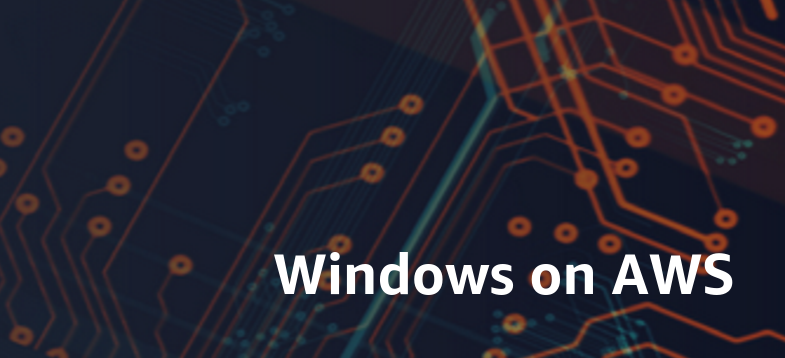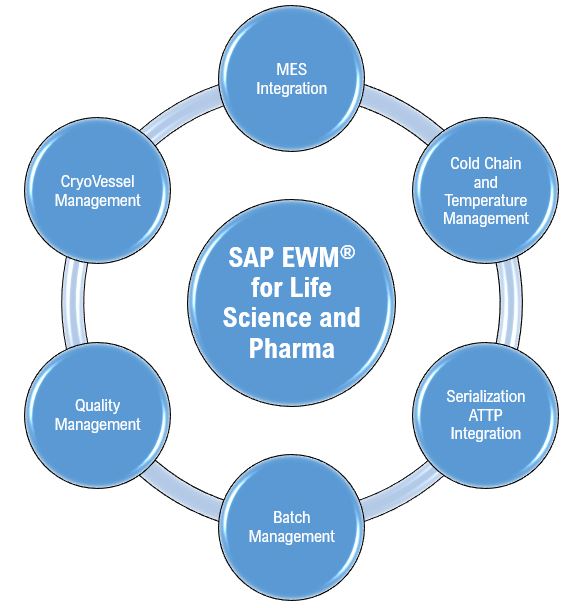The promise of a Laboratory Information Management System (LIMS) is compelling: streamlined workflows, enhanced data integrity, and improved regulatory compliance. It’s the digital backbone that modern labs rely on to manage the ever-increasing volume and complexity of their operations. Yet, the journey from selecting a LIMS to its successful implementation is rarely a smooth, linear path. Many organizations find themselves grappling with unexpected hurdles and facing challenges that can derail timelines, inflate budgets, and ultimately hinder the realization of the anticipated benefits.
LIMS implementation is not just about installing software, it’s about transforming processes, adapting processes, and ensuring that technology truly serves science. The blog tries to shed light on some of the most common challenges that organizations face during LIMS implementation. Understanding these potential pitfalls is the first crucial step towards navigating them effectively.
1. “Out-of-the-Box”: Underestimating Customization Needs
The initial attraction towards the “out-of-the-box” LIMS solution is understandable. It promises a quick and seemingly cost-effective path to modernization. However, the reality is that laboratory environments are rarely conventional. Each lab operates with unique Standard Operating Procedures (SOPs), specific analytical instruments, distinct data capture requirements, and established reporting formats.
The Pitfalls:
- Forced Workflows: Trying to adapt existing lab processes to the rigid structure of an unmodified LIMS can lead to inefficiencies, workarounds, and user frustration. Lab Users might find themselves performing extra steps or manually manipulating data outside the system to fit their needs, negating the benefits of automation.
- Data Mismatch: The standard data fields and structures in an off-the-shelf LIMS might not align with the specific data points your lab collects and analyzes. This can result in loss of critical information, cumbersome data entry, and difficulties in generating meaningful reports.
- Limited Integration: Out-of-the-box solutions might lack seamless integration with your existing instruments or other crucial software, creating data silos and hindering the flow of information.
- Missed Opportunities: By not customizing, you might miss opportunities to automate specific, repetitive tasks that are unique to your lab, thus failing to maximize efficiency gains.
The Solution:
- Detailed Requirements Gathering: Invest significant time in thoroughly documenting your current workflows, data requirements, reporting needs, and integration points. Involve all key stakeholders from different lab departments.
- Gap Analysis: Compare your documented requirements against the capabilities of the selected LIMS. Identify the gaps where customization will be necessary to truly meet your needs.
- Prioritization: Not all desired customizations are critical for the initial go-live. Prioritize those that will deliver the most immediate value and address the most significant pain points.
- Phased Implementation: Consider a phased approach where essential customizations are implemented initially, with further enhancements rolled out in subsequent phases based on user feedback and evolving needs.
2. Data Migration: A Critical Step in LIMS Deployment
The migration of historical data into a new LIMS is often underestimated in terms of complexity and effort. Labs can accumulate vast amounts of data over years, stored in various formats and systems, often with inconsistencies and errors.
The Pitfalls:
- Data Inconsistencies: Legacy systems might have allowed for inconsistent data entry, leading to variations in terminology, units of measurement, or data formats. Migrating this “dirty” data can compromise the integrity of the new LIMS.
- Data Mapping Complexity: Aligning the data fields from the old system(s) to the corresponding fields in the new LIMS can be a complex mapping exercise, especially if the systems have different structures.
- Data Volume: Transferring extensive datasets can demand significant time and resources, often stretching project timelines and requiring careful planning to manage system load and ensure data integrity.
- Data Loss: Without proper planning and execution, there’s a risk of losing valuable historical data during the migration process.
- Validation Challenges: Migrated data in regulated environments needs to be validated to ensure its accuracy and traceability, adding another layer of complexity.
The Solution:
- Dedicated Data Migration Team: Assign a dedicated team with expertise in both IT and laboratory processes to oversee the data migration.
- Data Cleansing and Standardization: Before migration, invest time in cleaning and standardizing the data in the legacy systems. Identify and correct inconsistencies and errors.
- Data Mapping Approach: Create a detailed plan that outlines how each piece of data from the legacy system will be aligned, converted, and integrated into the new LIMS structure, ensuring consistency and accuracy throughout the migration process.
- Phased Migration: Consider migrating data in phases, prioritizing the most critical data first.
- Data Validation Plan: Implement a robust data validation plan to verify the accuracy and completeness of the migrated data in the new LIMS. This may involve comparing samples of data from the old and new systems.
3. Resistance to Change
Technology alone cannot guarantee successful LIMS implementation. The human element – the end-users who will interact with the system daily – plays a crucial role. Resistance to change and insufficient training can significantly hinder adoption and impact the return on investment.
The Pitfalls:
- Fear of the Unknown: Users may be apprehensive about learning a new system, fearing it will make their jobs more difficult or expose their lack of technical skills.
- Increase in Workload ?: Some users may initially perceive the new LIMS as adding extra steps to their existing workflows, even if it ultimately streamlines processes.
- Lack of Buy-in: If users are not involved in the selection or implementation process, they may feel the new system is being imposed on them, leading to resentment and resistance.
- Inadequate Training: Insufficient or poorly delivered training can leave users feeling unprepared and unable to effectively utilize the LIMS, leading to errors, frustration, and underutilization of features.
- Lack of Ongoing Support: Without ongoing support and resources, users may struggle with issues and revert to old, inefficient methods.
The Solution:
- Early Stakeholder Involvement: Involve lab personnel in the LIMS selection and implementation process from the beginning. Seek their input and address their concerns.
- Change Management Strategy: Develop a comprehensive change management plan that addresses communication, education, and support for users throughout the transition.
- Tailored Training Programs: Design training programs that are specific to different user roles and workflows. Utilize a variety of training methods, such as hands-on workshops, online tutorials, and quick reference guides.
- Champions and Superusers: Identify key users who are enthusiastic about the new system and can act as champions within their departments, providing peer support and encouraging adoption.
- Post-Go-Live Support: Provide ongoing support, resources, and opportunities for refresher training to ensure users continue to develop their skills and address any issues that arise.
4. Must have and Nice to have Features
During the often-lengthy LIMS implementation process, as users gain a better understanding of the system’s capabilities, the desire for additional features and functionalities can emerge. While these requests may seem beneficial individually, collectively they can lead to “scope creep,” significantly impacting timelines and budgets.
The Pitfalls:
- Project Delays: Adding new features mid-implementation requires additional development, testing, and validation, inevitably pushing back the go-live date.
- Budget Overruns: Unforeseen development and customization efforts can lead to significant increases in project costs.
- Increased Complexity: Adding too many features too early can make the system more complex to implement, test, and ultimately for users to learn and adopt.
- Focus Dilution: The project team’s focus can become diluted by addressing new requests, potentially impacting the quality and timely delivery of the core functionalities.
The Solution:
- Clear Scope Definition: Establish a well-defined project scope at the outset, clearly outlining the functionalities that will be included in the initial implementation.
- Change Management: Establish a structured change control process to evaluate, approve, and track modifications during the LIMS implementation. This ensures that any new requests are assessed for impact on scope, timeline, and budget before being implemented.
- Prioritization and Phasing: Prioritize requested features and consider implementing non-critical enhancements in subsequent phases after the initial go-live.
- Strong Project Management: An experienced project manager is crucial for managing scope, communicating effectively with stakeholders, and ensuring the project stays on track.
5. Integration Challenges
Modern laboratories rely on a diverse ecosystem of software and instruments. Seamless integration of the LIMS with these systems is crucial for automating data flow, eliminating manual data entry, and providing a holistic view of lab operations. However, achieving this integration can be a significant technical challenge.
The Pitfalls:
- System Compatibility Issues: Different platforms often operate using different data formats and communication protocols, which can complicate integration and require additional effort to ensure interoperability.
- Custom Interface Development: Integrating with legacy systems or less common instruments may require the development of custom interfaces, which can be complex and time-consuming.
- Data Transformation: Data often needs to be transformed and mapped between different systems to ensure compatibility and accuracy.
- Integration Testing: Thoroughly testing the integration points between different systems is critical to identify and resolve any data exchange issues.
- Maintenance and Upgrades: Maintaining the integrity of integrations during system upgrades or when changes are made to individual systems can be an ongoing challenge.
The Solution:
- Integration Planning: Develop a detailed integration plan that identifies all the systems that need to be integrated with the LIMS and defines the data flow between them.
- API Assessment: Thoroughly assess the APIs and integration capabilities of the LIMS and the other relevant systems.
- Experienced Integration Team: Engage a team with expertise in system integration and the specific technologies involved.
- Testing Framework: Design a robust testing plan that encompasses unit tests, system integration checks, and user interface evaluations. Leverage automation tools such as Espresso and Appium to streamline UI testing and ensure consistent performance across platforms.
- Clear Documentation: Maintain detailed documentation of all integrations, including data mappings and communication protocols, to facilitate future maintenance and troubleshooting.
6. The Vendor-Client Disconnect: Communication and Expectations
A successful LIMS implementation is a partnership between the implementing organization and the LIMS vendor. A breakdown in communication or misaligned expectations can lead to misunderstandings, delays, and ultimately, a less-than-satisfactory outcome.
The Pitfalls:
- Unclear Communication Channels: Lack of clear and consistent communication can lead to misunderstandings and delays in addressing issues.
- Unrealistic Expectations: The client may have unrealistic expectations about the speed of implementation, the level of customization possible, or the immediate benefits they will see.
- Lack of Understanding of Lab Needs: The vendor may not fully grasp the specific nuances of the lab’s workflows, regulatory requirements, or business objectives.
- Poor Project Management: Ineffective project management from either the client or the vendor can lead to missed deadlines, budget overruns, and a lack of coordination.
- Insufficient Vendor Support: Inadequate support from the vendor during and after implementation can leave the client struggling to resolve issues and fully utilize the system.
The Solution:
- Establishing Effective Communication: Set up well-defined communication protocols and schedule regular check-ins to ensure alignment between all stakeholders, promote transparency, and address issues promptly throughout the LIMS implementation process.
- Define Roles and Responsibilities: Clearly outline the roles and responsibilities of both the client and the vendor throughout the implementation process.
- Realistic Expectation: Have open and honest discussions about the project timelines, costs, and the capabilities and limitations of the LIMS.
- Vendor Selection Process: Choose a vendor with a proven track record in implementing LIMS in similar laboratory environments and who demonstrates a strong understanding of your industry.
- Strong Project Management and Governance: Implement effective project management practices and establish a clear governance structure with regular stakeholder updates.
By understanding these detailed challenges and proactively addressing them with well-defined strategies, laboratories can significantly increase their chances of a successful and impactful LIMS implementation that delivers tangible benefits and supports their scientific endeavors.









Detailed and informative, solutions shared are going to help in improving the overall productivity